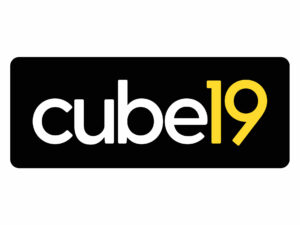Learn the way of the wolf! We outline the 17 selling strategies taught by the infamous Jordan Belfort from his best-selling book “The Way of the Wolf – Straight Line Selling”Jordan Belfort, better known as The Wolf of Wall Street from the Martin Scorsese movie of the same name, has earnt himself a significant level of notoriety from his lavish and turbulent lifestyle. Filled with unbelievable stories of highs and lows, despite his nefarious activities, his sales skills cannot be questioned. Belfort now travels the world to speak and offers sales courses to large corporations.
In this article we’ll cover some of Jordan’s selling techniques in what he describes as his ‘Straight Line Systems’ for making a successful sale.
The Straight Line System
Remember this scene? Jordan built his loyal team of followers by turning ordinary people into ferocious sales professionals. Through his Straight Line System, they went from rookies to masters at closing the sale.
“The Straight-Line System [levels] the playing field for anyone who’d been held back from achieving greatness.”
Jordan has perfected and utilised his techniques worldwide with marketers, sales professionals and persuaders alike, becoming the basis for one of his books.
The Three Elements of a Successful Sale
“Every sale is the same” and every sale is built from the same 3 elements.
- The product, idea or concept – Your prospect must fall in love with what you’re selling. You’re aiming for a ‘Level 10’ of excitement and if they’re anything lower than an 8, you need to push them to a 10.
- “Trust” the salesperson – Rapport needs to be personal and it needs to be great. If you can’t achieve this then you can’t make a great sale.
- The prospect must trust and connect with the company – The final element requires you to aim for compatibility and affinity between the prospect and what you’re offering.
If you achieve these 3 elements, you’ve got the building blocks to a great sale.
Jordan calls these the ‘Three 10s”
“When it comes time to ask for the order…the closer you’ve gotten your prospect[s] to a 10, the better chance you have of closing them.”
The Four Selling Principles
As well as the 3 elements, Jordan outlines his four facets of transaction.
1. “The first four seconds” – You get a mere 4 seconds to influence your prospect’s decision about you. If you can get across that you are “Sharp, enthusiastic, an expert in your field, competent, knowledgeable and professional”, you’ve got a chance.
Belfort explains that you need to behave as if you possess all of these qualities.
2. “Tonality and body language” – Your tone and body language affect your prospect’s subconscious mind and make your ‘emotional case’.
Your tone should be empathetic, sincere and caring.
3. “State management” – Imagine you’ve attained a goal and you’re actively benefiting from it. Visualise this positivity in your mind and use it to influence your sale and pitching.
“If you spend the next few minutes focusing on everything that’s great in your life…then you’ll quickly pop into a positive, empowered state that reflects all those wonderful things.”
4. “Looping” – Use this with the dreaded objection from a customer. Briefly delay a customer objection by looping back to a previous positive from your presentation. Move them along a ‘continuum of certainty’.
If done correctly, your loop will resell to the prospect, increasing their belief in doing business with you.
The 10 rules of Straight Line Prospecting
- Don’t waste your time trying to convert unlikely buyers into the passionate prospects you need.
- Get the ‘OK’ from your prospect before asking them questions.
- Use a script so you don’t waste time trying to think of the best questions to ask.
- Start with less invasive rapport-building questions and slowly work into the more intimate ones. You must earn the right to ask the obtrusive questions.
- Think about your tone when asking a question and allow empathy and respect to be reflected.
- Use body language that shows genuine interest and emotion when meeting with your prospect.
- Make sure your line of questioning follows a logical path to allow yourself to look like an expert.
- Begin by amplifying the pain point that your product will solve and only offer the solution to their pain after you’ve done this successfully.
- Ensure you’re using effective transitions. For example, “So, Karen, based on everything we’ve discussed this placement is a perfect fit for you. Let me tell you why…”
- Maintain a logical order in your conversation and try not to deviate from the purpose of the call to make the sale.
“People don’t buy on logic; they buy on emotion, and then justify their decision with logic.”
Taking your recruitment sales to the advanced stage.
Hitting the selling basics that Jordan Belfort outlines here will certainly help you on your way to closing candidates and mastering business development. But, sometimes a little more knowledge of your industry best practice and technique’s will help you step into the realm of the advanced recruiter.
This is why we’ve built a custom course on this exact topic on TRN World, taught by our sales trainer and chairman James Osborne. From lessons in retained and contingents to effective funnels and negotiation techniques. The Advanced Recruitment course will take you from competent to expert.
Share :




